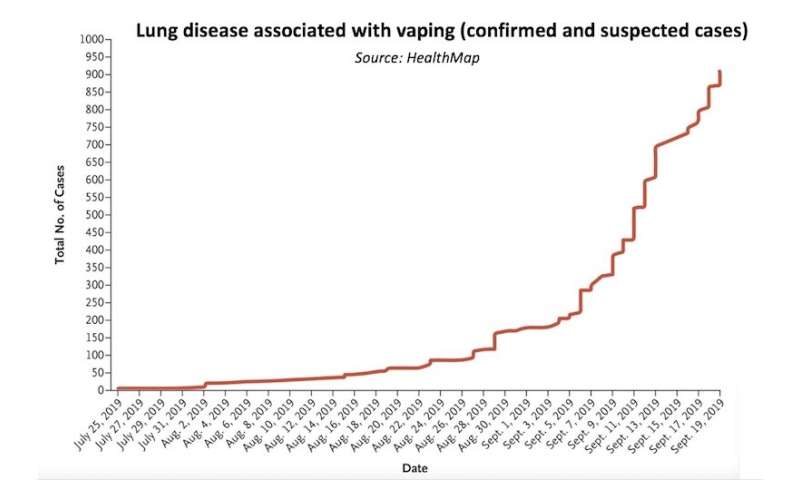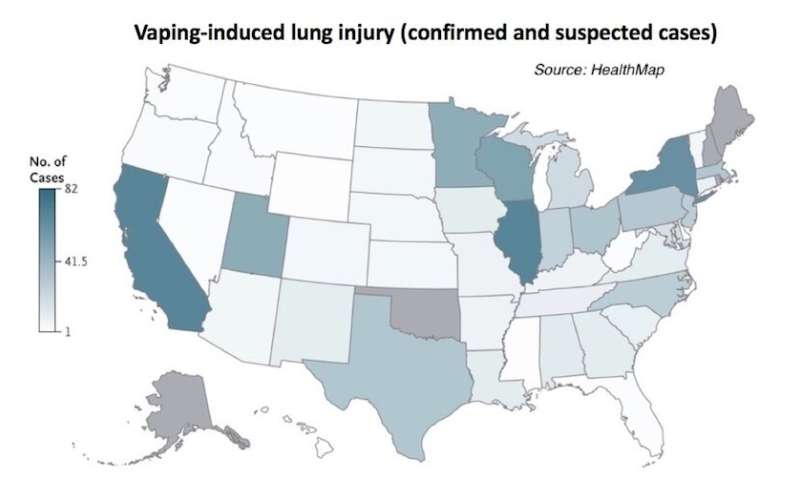

Severe lung disease related to vaping has been surging across the U.S., with the eighth death confirmed last week by the Centers for Disease Control and Prevention. A brief report in the New England Journal of Medicine suggests that online data-mining tools can supplement traditional public health surveillance and help officials stay ahead of this sudden epidemic.
Yulin Hswen, Ph.D. and John Brownstein, Ph.D., of Boston Children’s Hospital’s Innovation & Digital Accelerator Program and Harvard Medical School, first picked up eight suspected cases of vaping-associated lung disease on July 25 using their HealthMap digital disease surveillance platform. That early alarm came more than a month before CDC’s announcement of cases of vaping-associated lung disease on Sept 6th, 2019.
Capturing cases under investigation
HealthMap integrates information from official reports with data from informal Internet sources, including local news reports, online forums, and eyewitness reports on social media. Its broader net has picked up suspected cases of vape-related lung injury not known to the CDC.
For example, on September 19, the CDC reported 530 confirmed or probable cases to date, from 38 states and one U.S. territory. In contrast, as of September 20, HealthMap had identified a total of 908 cases across 45 states and the U.S. Virgin Islands (495 confirmed, 413 suspected). By capturing suspected cases under investigation, HealthMap offers a more complete picture of the vaping outbreak, says Hswen.


Hswen believes that early insights from informal online surveillance could potentially help redirect public health action and head off new cases. Moreover, online data might help pinpoint the precise vaping components causing the lung disease. Already, they suggest that a rise in “homebrew” vaping recipes and counterfeit e-cigarette parts could be behind the outbreak.
Source: Read Full Article